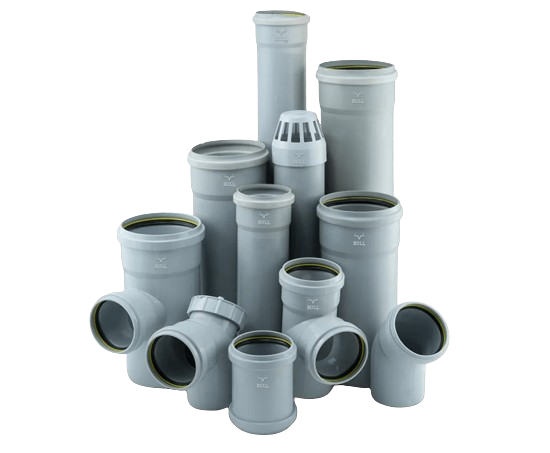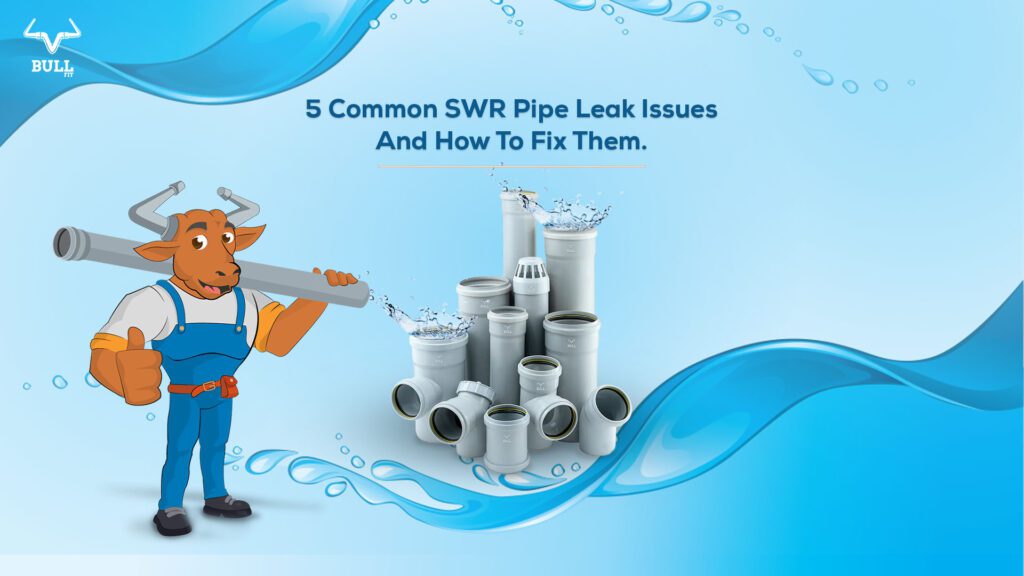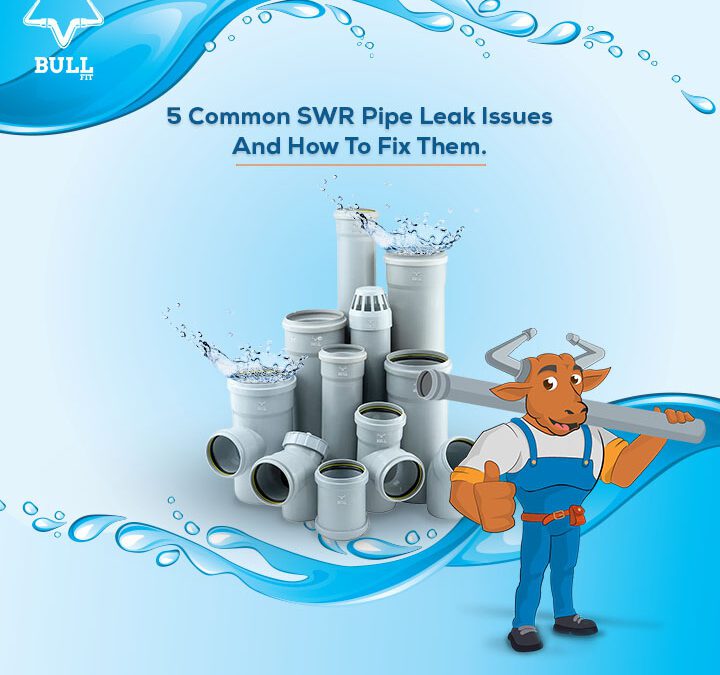
Piping Solutions Tailored to Your Home’s Needs
December 21, 2023
Maintenance Tips to Keep Your Water Tank in Top Condition
February 8, 20245 Common SWR Pipe Leak Issues and How to Fix Them
Home sewage and rainwater drainage via an extensive network of connected SWR pipes is an underappreciated modern convenience when working properly. However, the reality is that improperly fitted, substandard or aging SWR pipes prone to cracking frequently cause leaks over time. Left unaddressed, even seemingly small seepages can lead to major headaches. Whether you are a building owner, resident or facility manager, detecting and fixing minor SWR leaks early prevents expensive damages.
5 Common SWR Pipe Leak Issues
Improper Slope Alignment
SWR pipes follow pre-calculated slope gradients to leverage gravity and allow smooth waste and rainwater flow. Imprecise installation or settling foundations can misalign pipes from the intended sloped orientation. Consequently, water gets collected in stagnant pools instead of flowing out fully, leading to leaks.
Crack Development
PVC and UPVC piping materials can become brittle over time due to chemical residues or extreme weather fluctuations. Cracks develop on the surface, causing water seepage. If neglected, cracks widen further and result in major pipe erosions and ruptures.

Tree Root Infiltration
While it is convenient to install exterior drainage lines under landscaped greens, pipe cracks provide easy access for invasive tree roots. Root bundles can enter pipe openings and rapidly proliferate, blocking passages completely. Drainage backflows and surface pooling represent classic signs.
Rodent Infestation
Rodents gnaw into PVC and UPVC pipes seeking nesting spots. Their sharp teeth easily cut into aging SWR pipes already weakened by environmental factors. Alongside hygiene issues and foul odors, continuous gnawing causes water leaks and hinders wastewater movement through tunnels.
Now that we have recognize potential problem signs like foul odors or surface pooling around building’s SWR network indicating pipe leaks, let’s explore solution options. The good news is many external drainage pipe fixes like unclogging blockages or sealing minor cracks involve basic equipment and manual skills for DIY projects. However, secured internal pipe sections prone to advanced failures will need assistance from plumbers. Either way, with early diagnosis, rectifying most common household SWR leakage issues before they escalate keeps repair budgets contained.
Improper Slope Alignment
Examine SWR specifications to identify ideal slope degrees for each piping section. Reslope using appropriate PVC/UPVC fittings like bends and elbows. For foundation settling issues, adjust exterior grade to recreate slope. Utilizing laser-guided tools aids precision.
Crack Development
Scan all visible pipe sections for cracks wider than 1 mm, especially near joints. Surfaces should feel smooth when running hand over them. Use a pipe epoxy sealant formulated for SWR systems to coat cracks greater than 3 mm width after manually debriding edges. Seek professional help for thermal expansion related widespread cracks.

Detached Joints
Check joints by giving light random taps with a hammer. Hollow, reverberating sounds signal looseness while dull thuds indicate stability. Post drying, inspect for gaps greater than 1 mm between joint-pipe interphases and rectify accordingly.
Tree Root Infiltration
Physically remove thick roots observed through drainage exit points via looping wire snares. Follow up by microbial enzyme drain cleaning solutions to actively degrade residual roots over 2-3 weeks before they repropagate. As a rule of thumb, ensure no landscape foliage stays closer than 3 feet to exterior house drain pipes.
Rodent Infestation
Begin by humanely trapping rodents and releasing outside at least 10 miles away to prevent homing instincts. Then sanitize affected areas completely using virucidal disinfectants compatible with SWR pipe materials to prevent disease transmission risks. Post drying, pour concrete sealants into visible gnawed sections to close gaps beyond 10 mm widths. Wrap wider damaged areas with fiber mesh.
Catching SWR leak issues early is critical to avoid water logging and unhygienic waste backflows. While some quick DIY fixes are possible for minor leaks, extensive damages require professional drainage repair services. Installing quality pipes like Bull Fit SWR pipes built from advanced polymeric blends prevents premature brittleness, cracks and rodent damages while facilitating leak proofing.




